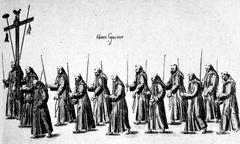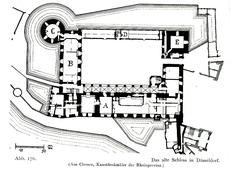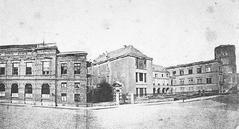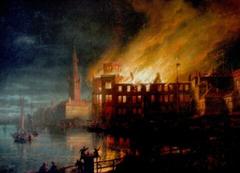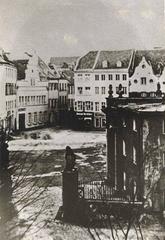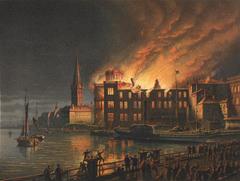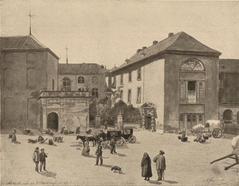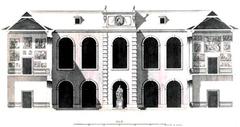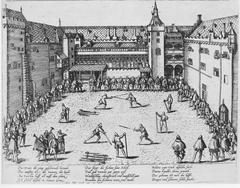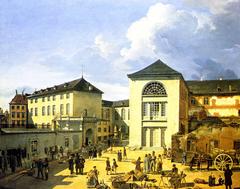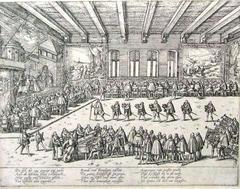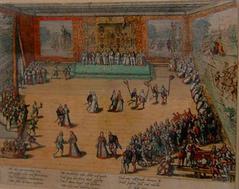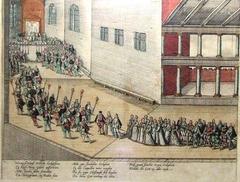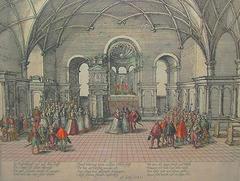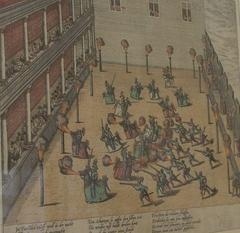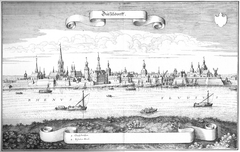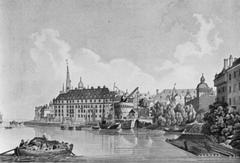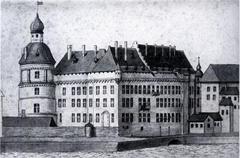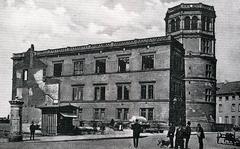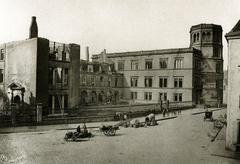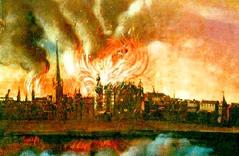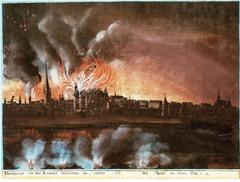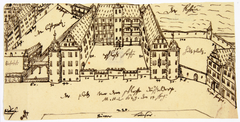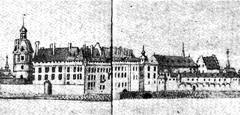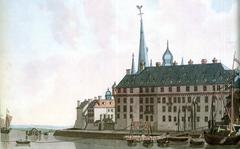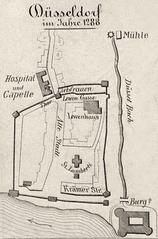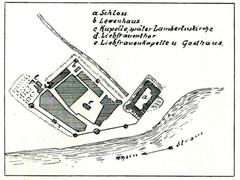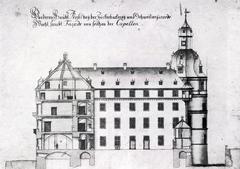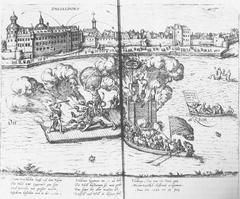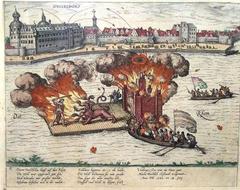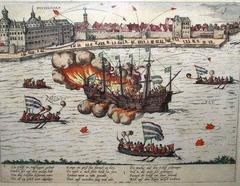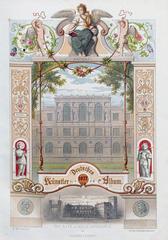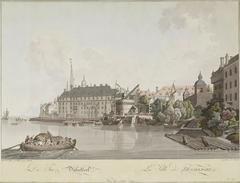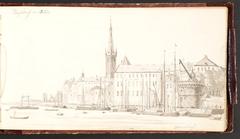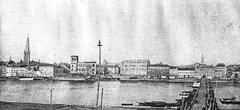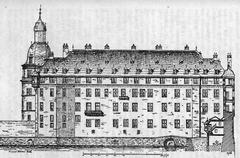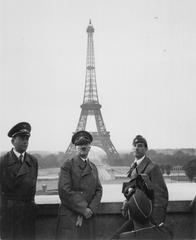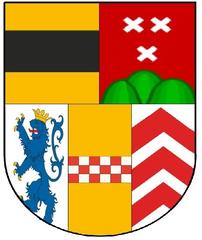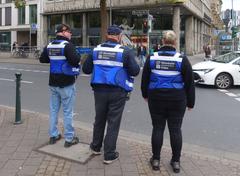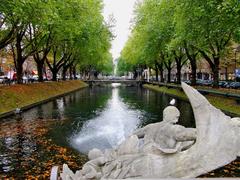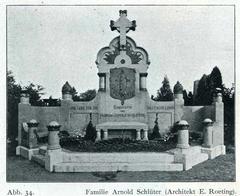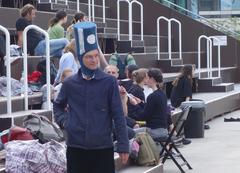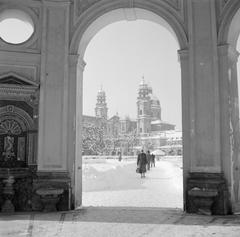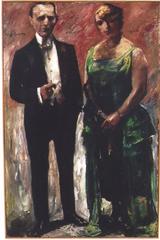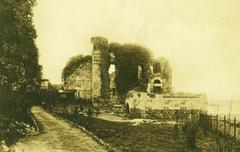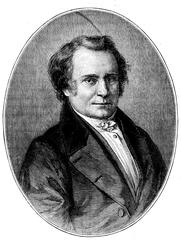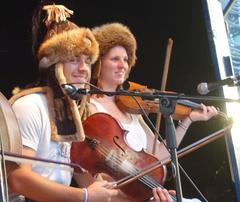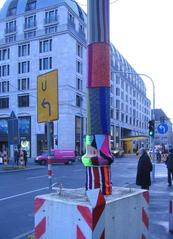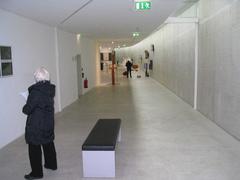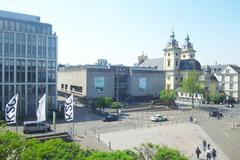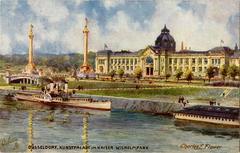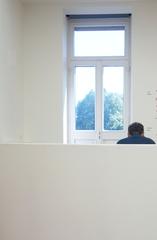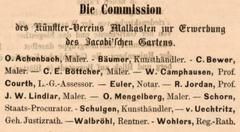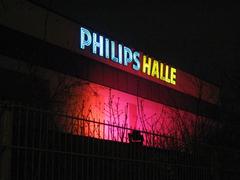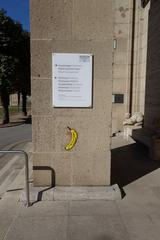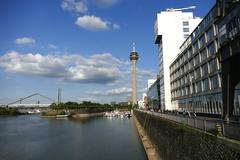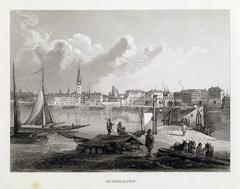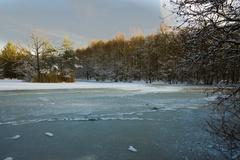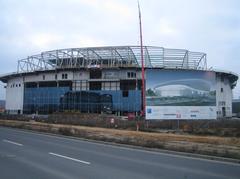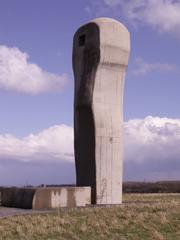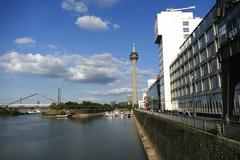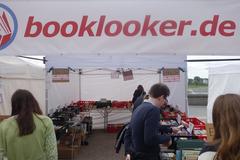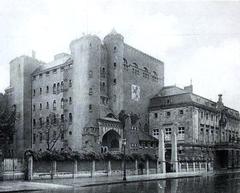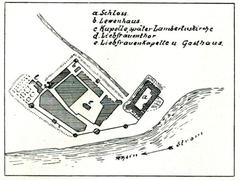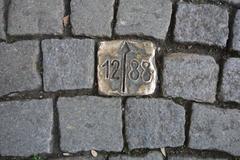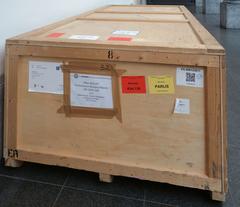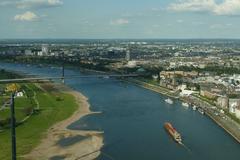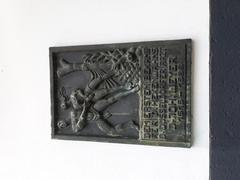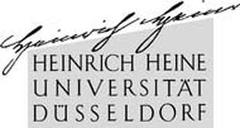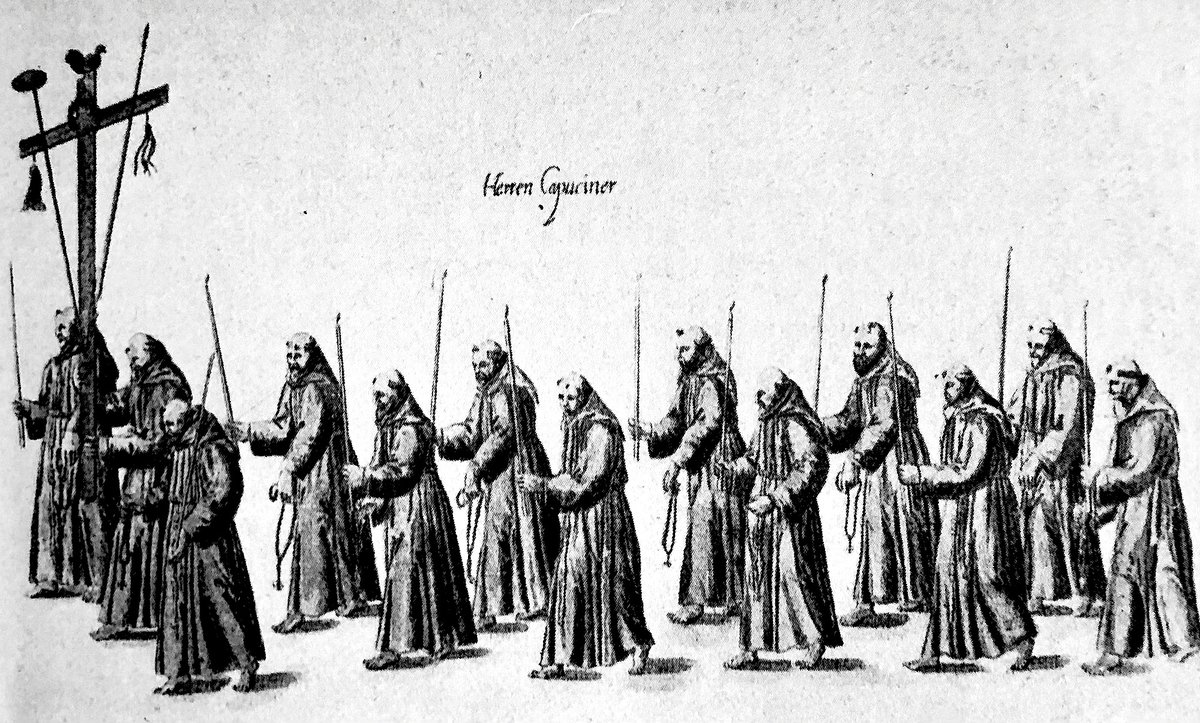
Düsseldorfer Schloss: Visiting Hours, Tickets, and Historical Sites in Düsseldorf
Publication Date: 15/06/2025
Introduction
In the heart of Düsseldorf, the remains of the Düsseldorfer Schloss—most notably the iconic Schlossturm—stand as silent witnesses to centuries of history. Once a formidable fortress and later a seat of political and cultural power, the castle’s story is closely intertwined with the city’s development, from medieval stronghold to modern metropolis. Today, the Schlossturm and Burgplatz offer visitors a gateway to Düsseldorf’s past, complemented by the engaging Schifffahrtsmuseum and a lively urban scene.
This guide delivers all essential details for planning your visit: opening hours, ticket options, accessibility, nearby attractions, practical tips, and answers to frequently asked questions. Whether you’re a history enthusiast, a family traveler, or simply curious about Düsseldorf’s heritage, this article ensures you make the most of your experience at one of the city’s most significant historical sites (germanytravel.blog; placesofgermany.de).
Contents Overview
- Introduction
- Historical Overview
- Medieval Origins and Development
- Renaissance and Baroque Transformations
- Political and Cultural Importance
- Destruction and Legacy
- The Schlossturm and Schifffahrtsmuseum Today
- Visiting Information
- Opening Hours
- Tickets and Admission
- Accessibility
- Guided Tours and Events
- Getting There and Parking
- Nearby Attractions and Activities
- Practical Visitor Tips
- Frequently Asked Questions (FAQ)
- Conclusion
- Sources and Further Reading
Historical Overview
Medieval Origins and Development
The story of Düsseldorfer Schloss begins in the mid-13th century, when the Counts of Berg constructed a fortified castle at the confluence of the Rhine and Düssel rivers. This strategic site controlled river trade and provided defense against regional rivals (de.wikipedia.org). The castle’s prominence grew after the Battle of Worringen in 1288, which secured Düsseldorf’s autonomy and elevated its status in the region.
By the late 14th century, the castle complex expanded, including a princely chapel and administrative centers. The Schlossturm, with its robust medieval stonework, remains the oldest surviving structure, anchoring Burgplatz and symbolizing the city’s resilience (germanytravel.blog).
Renaissance and Baroque Transformations
The 16th and 17th centuries saw dramatic changes. After a fire in 1510, the castle was rebuilt with Renaissance features under the direction of Italian architect Alessandro Pasqualini. Later, under Elector Johann Wilhelm II (“Jan Wellem”), Baroque elements were added, and the castle became home to Europe’s first purpose-built art gallery (1709–1712), hosting a celebrated collection of Renaissance and Baroque art (en.wikipedia.org).
Political and Cultural Importance
Throughout the centuries, the castle functioned as the seat of ducal power, a hub for governance, trade, and cultural patronage. It attracted artists, scholars, and dignitaries, solidifying Düsseldorf’s reputation as a center of prosperity and enlightenment. In the 19th century, following the Napoleonic Wars, the castle housed the Prussian mint, the Kunstakademie Düsseldorf, and later served as the seat of the Provincial Diet (en.wikipedia.org).
Destruction and Legacy
Despite its grandeur, the castle endured multiple devastating fires, most notably in 1872, which left only the Schlossturm standing (burgerbe.de). The ruins were cleared by the late 19th century, and Burgplatz was established, with colored stones marking the castle’s former footprint (de.wikipedia.org). Today, the Schlossturm is home to the Schifffahrtsmuseum, preserving the memory of the castle and the city’s maritime legacy (germanytravel.blog).
The Schlossturm and Schifffahrtsmuseum Today
The Schlossturm: Medieval Tower in a Modern City
The Schlossturm is a five-story tower with a blend of medieval stonework and later architectural additions, including a distinctive tented roof and an 1883 portal. Standing 33 meters high, it offers panoramic views over the Rhine and the Altstadt (placesofgermany.de). Its weather vane, designed by Ferdi Walther, commemorates the 1872 fire.
The Schifffahrtsmuseum: Maritime History Brought to Life
Inside, the Schifffahrtsmuseum (Maritime Museum) presents interactive exhibits on the history of shipping on the Rhine, ship models, navigational instruments, and multimedia installations. The museum is family-friendly and hosts regular special exhibitions and cultural events. The top floor viewing platform is a highlight for photography and city vistas (official Schifffahrtsmuseum site).
Visiting Information
Opening Hours
- Schifffahrtsmuseum (Schlossturm):
Open Tuesday to Sunday, 11:00–18:00. Closed on Mondays and select public holidays. Hours may vary during special events—check the official museum website for updates.
Tickets and Admission
- Standard Admission: Modest fee for adults, with discounts for students, seniors, and groups.
- Children: Typically free for ages under 6 or 7.
- DüsseldorfCard: Holders receive free entry or discounts to many attractions, including the Schifffahrtsmuseum.
- Where to Buy: Tickets available on-site and online via the museum’s website.
Accessibility
- Ground floor and some exhibits are wheelchair accessible.
- Upper floors are reachable only by stairs; there is no elevator due to the historical structure.
- Facilities: No restrooms inside the Schlossturm; public toilets are nearby in the Altstadt.
- Assistance: Contact the museum in advance for specific accessibility needs (duesseldorf.de).
Guided Tours and Events
- Guided Tours: Available in German and, by arrangement, in English or other languages. Advance booking is recommended for non-German tours.
- Special Exhibitions: The museum regularly hosts temporary exhibitions, workshops, and educational programs for families and schools.
Getting There and Parking
- Location: Burgplatz, Düsseldorf Altstadt.
- Public Transport: Trams and buses to Heinrich-Heine-Allee or Rathausufer, both a short walk from Burgplatz (22places.de).
- Car Parking: Limited; nearby options include Schlossgarage on Paulistraße and Cäcilienstraße car parks.
- Recommendation: Use public transportation or walk, especially during weekends and festivals (visitduesseldorf.de).
Nearby Attractions and Activities
- Rhine Promenade: Lively waterfront with views, street performers, and access to Medienhafen and Rheinturm (22places.de).
- St. Lambertus Basilica: Known for its twisted spire and Gothic architecture.
- Düsseldorf Altstadt: “The longest bar in the world,” vibrant pubs, historic streets, and the Marktplatz with Rathaus.
- Stadterhebungsmonument: A bronze sculpture celebrating Düsseldorf’s city rights in 1288 (thecrazytourist.com).
- Seasonal Events: Christmas markets, open-air concerts, and the Größte Kirmes am Rhein festival light up the area year-round.
Practical Visitor Tips
- Best Time to Visit: Weekday mornings or outside peak tourist seasons for fewer crowds. The area is especially atmospheric during major city festivals.
- Photography: Personal photography is welcome; restrictions may apply for tripods and flash.
- Dining: No café on-site, but Altstadt offers abundant restaurants and traditional breweries.
- Souvenirs: Maritime-themed gifts available at the museum kiosk; numerous souvenir shops in Altstadt.
- For Families: The museum’s interactive displays are engaging for children. Combine your trip with riverside walks or a visit to a local ice cream shop.
Frequently Asked Questions (FAQ)
What are the Schlossturm’s visiting hours?
Tuesday to Sunday, 11:00–18:00. Closed Mondays and some holidays. Always check the official website for updates.
How much are tickets?
Affordable, with discounts for students, seniors, and groups. Children under 6 or 7 enter free.
Are guided tours available?
Yes, in German and by request in English or other languages. Book in advance for non-German tours.
Is the Schlossturm accessible to wheelchair users?
Some ground-floor exhibits are accessible; upper floors require stairs. Contact the museum for detailed accessibility information.
Can I take photos inside?
Personal photography is generally allowed; no tripods or flash.
Conclusion
The Düsseldorfer Schloss, though largely lost to time, continues to shape Düsseldorf’s identity through the Schlossturm and the bustling Burgplatz. The site offers a unique blend of medieval heritage, maritime history, and urban vibrancy, making it a must-visit destination for anyone exploring Düsseldorf’s historical sites. With convenient visiting hours, modest ticket prices, engaging exhibits, and a central location near other major attractions, the Schlossturm and Schifffahrtsmuseum promise a rewarding experience for all visitors.
Plan ahead by checking the latest information on the official museum website, and consider using the Audiala app for guided tours and insider tips. Enjoy your journey through Düsseldorf’s storied past!
Sources and Further Reading
- Visiting Düsseldorfer Schloss: History, Tickets, Hours & Travel Tips, 2025, germanytravel.blog (germanytravel.blog)
- Discovering the Düsseldorfer Schloss: Visiting Hours, Tickets & Historical Highlights, 2025, placesofgermany.de (placesofgermany.de)
- Düsseldorfer Schloss, 2025, de.wikipedia.org (de.wikipedia.org)
- Düsseldorf Castle, 2025, en.wikipedia.org (en.wikipedia.org)
- Visiting the Schlossturm in Düsseldorf: Hours, Tickets, and Nearby Attractions, 2025, 22places.de (22places.de)
- Best Attractions in Düsseldorf, 2025, timeout.com (timeout.com)
- Why Düsseldorf Has No Castle Anymore (German), burgerbe.de (burgerbe.de)
- Official Schifffahrtsmuseum Düsseldorf (duesseldorf.de)
- Düsseldorf Tourism Portal (visitduesseldorf.de)
- The 25 Best Things to Do in Düsseldorf, thecrazytourist.com (thecrazytourist.com)
- The 10 Most Beautiful Castles in Düsseldorf and Surroundings, mrduesseldorf.de (mrduesseldorf.de)
Visual Recommendations:
- Include images of the Schlossturm exterior, museum exhibits, panoramic Rhine views, and Burgplatz events.
- Alt text examples: “Schlossturm tower at Burgplatz in Düsseldorf,” “Interactive exhibit at Schifffahrtsmuseum Düsseldorf,” “View from Schlossturm over the Rhine.”
Internal Links Suggestions:
- Link to articles on Düsseldorf Altstadt, Rhine Promenade, and other major city attractions.
External Links Suggestions:
- Embed links to the official Schifffahrtsmuseum website and the Düsseldorf tourism portal.
